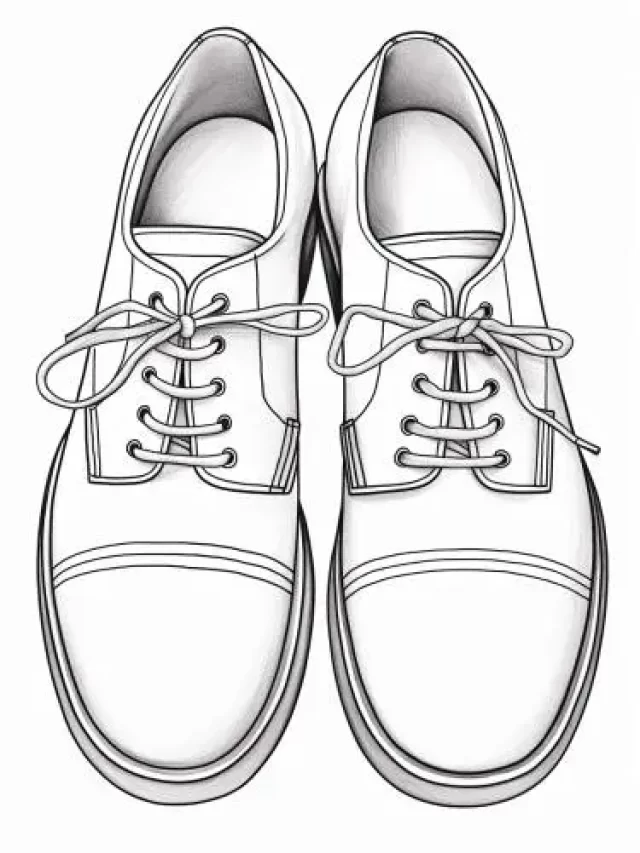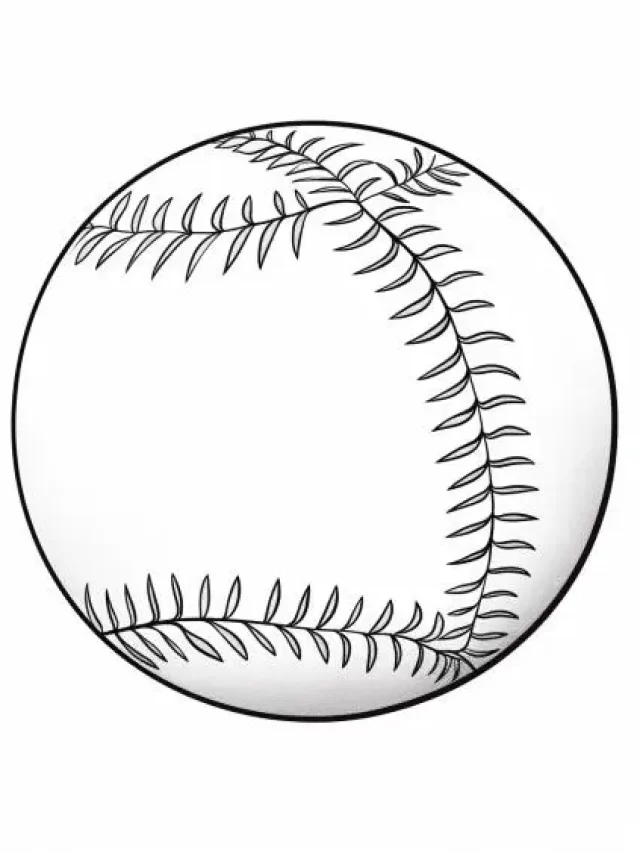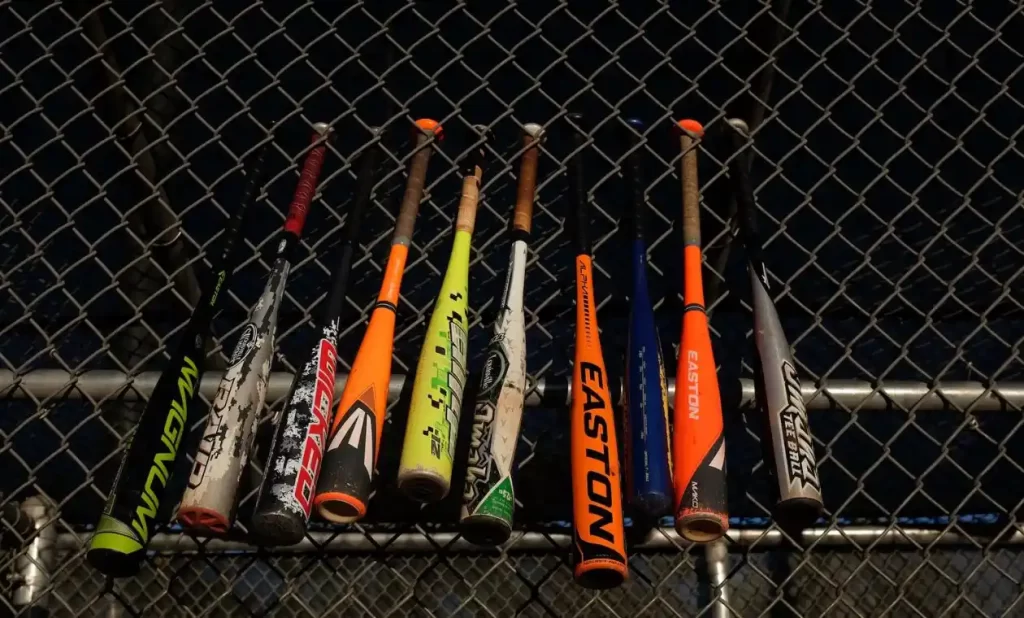
Baseball, often referred to as America’s favorite pastime, is a sport deeply rooted in tradition and innovation. At the heart of this beloved game lies a seemingly simple yet essential piece of equipment: the baseball bat. A symbol of power, precision, and performance, the choice of bat can make all the difference between a triumphant home run and a missed opportunity. In the world of baseball, the type of bat you wield can significantly impact your gameplay and experience on the field.
As the crack of the bat echoes across the stadium and the crowd holds its breath, players and fans alike understand the significance of this moment. It’s not just a swing; it’s a connection between player and sport, a dance between wood or metal, and the heart of the game.
Yet, the choice between aluminum and wooden bats has sparked an ongoing debate that resonates within the baseball community. As technology advances and players seek every edge to excel, the question of which type of bat to use becomes more pressing. The clash between tradition and modernity, the raw feel of wood, and the engineered precision of aluminum form the crux of this enduring discussion.
In this article, we delve into the heart of the matter, exploring the nuances of aluminum and wooden bats, their respective advantages and drawbacks, and the factors that should guide your decision. Whether you’re a seasoned player aiming for that perfect swing or a newcomer navigating the intricacies of the game, understanding the choice between aluminum and wood is pivotal to honing your skills and embracing the spirit of baseball. So, join us as we unravel the ongoing debate and help you find the bat that aligns with your playing style, goals, and connection to the sport.
Key Differences Between Aluminum and Wooden Bats
When it comes to baseball bats, the choice between aluminum and wood goes beyond aesthetics; it directly affects your gameplay, strategy, and overall experience on the field. Understanding the fundamental differences between these two types of bats is essential for making an informed decision.
Aluminum Bats:
Aluminum bats are crafted from advanced alloys, and carefully engineered to provide maximum performance and durability. These alloys offer a lightweight and consistent material that allows for greater bat speed through the strike zone. The composition of aluminum bats is designed to generate a trampoline effect upon contact with the ball, resulting in higher ball exit velocities and enhanced power.
Wooden Bats:
Wooden bats, on the other hand, draw from the tradition of the sport. They are typically made from select types of wood, such as maple, ash, or birch. Each type of wood carries its unique characteristics that influence factors like weight distribution, feel, and durability. Wooden bats provide a tactile connection to the game, offering a raw, authentic experience that harkens back to baseball’s roots.
Aluminum bats are known for their larger sweet spot, which refers to the optimal area on the bat’s barrel that generates maximum power and accuracy upon contact. This attribute makes aluminum bats particularly appealing to players seeking to maximize their hitting potential. Additionally, aluminum bats tend to produce less vibration and sting upon mishits, providing a more comfortable experience for the player.
Wooden bats offer a different kind of performance experience. While their sweet spot may be smaller than that of aluminum bats, hitting the ball solidly with a wooden bat requires a higher level of skill and precision. Wooden bats promote a more controlled and deliberate approach to hitting, encouraging players to develop their technique and timing. This aspect of wooden bats can be especially beneficial for players looking to refine their skills and transition to higher levels of play.
Aluminum bats have gained popularity across various levels of play, from Little League to college baseball. Their technological advancements and performance benefits make them a favored choice among young players looking to enhance their hitting abilities. The larger sweet spot and forgiving nature of aluminum bats can provide confidence to players still developing their skills.
Wooden bats remain the quintessential choice for professional baseball players and serious amateurs. Many professional leagues mandate the use of wooden bats due to their authentic feel and skill-demanding nature. Using a wooden bat demands a deep understanding of the game’s mechanics and requires players to consistently make solid contact to achieve desired results.
In the next sections, we will delve deeper into the advantages of each type of bat, helping you navigate the decision-making process based on your playing style, aspirations, and appreciation for the game’s heritage. Whether you’re drawn to the cutting-edge technology of aluminum bats or the timeless connection offered by wooden bats, the choice is ultimately yours to make.
Advantages of Aluminum Bats
Aluminum bats have revolutionized the world of baseball with their innovative design and performance-enhancing features. These bats offer a range of advantages to players seeking power, comfort, and consistency in their swings.
One of the standout features of aluminum bats is their larger sweet spot. The sweet spot is the area on the bat’s barrel that delivers the most effective contact with the ball, resulting in optimal power and accuracy. Aluminum bats are engineered to maximize this sweet spot, allowing players to generate impressive hitting power even on slightly off-center hits. This broader hitting zone translates to more home runs and base hits, boosting a player’s confidence and impact on the game.
Hitting a baseball with precision and force is exhilarating, but it often comes with a trade-off: the sting and vibration felt in the hands upon contact with the ball. Aluminum bats are designed to minimize this discomfort through advanced dampening technologies. The alloys used in their construction absorb and distribute the shockwaves more effectively, reducing the impact felt by the player’s hands. As a result, batters experience less discomfort during mishits, enabling them to stay focused and ready for subsequent pitches.
Aluminum bats are renowned for their durability and prolonged lifespan compared to wooden bats. The advanced alloys used in their construction are resistant to cracking, splintering, and other forms of damage that can plague wooden bats. This durability is particularly advantageous for players who engage in intense training sessions, batting practice, and extended gameplay. A single aluminum bat can withstand a significant amount of wear and tear, making it a cost-effective and reliable choice for players who demand longevity from their equipment.
One of the driving factors behind the popularity of aluminum bats is the consistent performance they deliver. The engineered design ensures that the bat’s performance remains stable over time and under various playing conditions. This predictability enables players to fine-tune their hitting technique and adapt to different pitches, pitches, and game situations with confidence. The reliability of aluminum bats empowers players to focus on refining their skills rather than worrying about variations in bat behavior.
In essence, aluminum bats provide a contemporary solution for players who seek to capitalize on the advancements in bat technology. From a larger sweet spot that translates to increased hitting power, to the reduction of discomfort during hits, aluminum bats offer a dynamic and player-centric experience. As you continue to explore the world of baseball bats, it’s important to consider these advantages of your personal playing style and goals.
Advantages of Wooden Bats
Using a wooden bat in the game of baseball offers a range of advantages that appeal to players seeking a traditional and authentic experience. Let’s delve into the key benefits of choosing wooden bats for your gameplay:
There’s a distinct nostalgia associated with the classic feel and sound of a wooden bat connecting with a baseball. The deep, resonant “crack” of wood against leather carries with it a sense of timelessness and authenticity. Many players find this sensory experience to be an integral part of their connection to the sport’s rich history and heritage.
Using a wooden bat demands a higher level of skill and precision. The smaller sweet spot of wooden bats requires players to hone their hitting technique, timing, and bat control. As a result, players who consistently use wooden bats often see a marked improvement in their overall hitting abilities. The challenge of consistently making solid contact with a wooden bat can contribute to more strategic and calculated swings.
For players aspiring to make the leap from amateur to professional baseball, using a wooden bat becomes a critical component of their journey. Most professional leagues mandate the use of wooden bats to maintain the authenticity of the game and to ensure that hitting skills are finely tuned. By using wooden bats during amateur play, players can better prepare themselves for the transition to the professional level.
Many leagues, particularly at the higher levels of play, require the use of wooden bats. This regulation ensures that the skill and technique required for successful hitting remain central to the sport. If you’re considering competitive play in these leagues, becoming proficient with a wooden bat is not only advantageous but also a necessity.
Hitting a baseball solidly with a wooden bat is a feat that requires dedication and practice. Players who master the art of hitting with wood often experience a sense of accomplishment that goes beyond mere statistics. The journey of refining your technique, improving your bat control, and consistently making clean contact with a wooden bat can be deeply satisfying and rewarding.
Incorporating a wooden bat into your training and gameplay introduces you to a world of tradition, challenge, and growth. As you step up to the plate with a wooden bat in hand, you become a part of a long lineage of players who have embraced the unique advantages and timeless allure of this classic choice.
Considerations When Choosing
The decision between aluminum and wooden bats is not one to be taken lightly. To make the right choice, it’s important to consider a range of factors that align with your individual needs, goals, and circumstances. Here are some key considerations to keep in mind when choosing between these two types of bats:
The first step in selecting the ideal bat is to assess your skill level and experience as a player. If you’re new to the sport or still developing your skills, an aluminum bat might be a suitable choice. Aluminum bats’ larger sweet spot and forgiving nature can help boost your confidence and performance, allowing you to focus on improving your technique. On the other hand, if you’re a seasoned player with advanced hitting skills, a wooden bat can offer a challenge that helps refine your precision and timing.
Different baseball leagues, particularly at the competitive and professional levels, often have regulations and restrictions regarding bat usage. Some leagues mandate the use of wooden bats to maintain the authenticity of the game and the skill required for hitting. Before making a decision, familiarize yourself with the rules of your league to ensure that your chosen bat aligns with their guidelines.
Your playing style and personal preferences should also play a significant role in your bat selection. If you thrive on power hitting and seek a bat that maximizes hitting distances, an aluminum bat’s larger sweet spot and trampoline effect could be a great fit. Alternatively, if you value the tactile experience of the game and appreciate the nuances of bat control, a wooden bat might be more in line with your preferences.
Budget is another crucial consideration when choosing a bat. Aluminum bats generally come in a wide range of prices, offering options that cater to various budgets. Wooden bats, especially high-quality ones, can be more expensive due to the materials and craftsmanship involved. Consider your budget limitations and explore different bat models within your price range. Remember that investing in a quality bat can contribute to your overall performance and enjoyment of the game.
Ultimately, the decision between aluminum and wooden bats is a deeply personal one. It hinges on your unique blend of skills, aspirations, and the type of baseball experience you seek. By evaluating your skill level, league regulations, playing style, and budget, you can make an informed decision that aligns with your journey in the world of baseball. Whichever type of bat you choose, remember that your commitment to practice, improvement, and the joy of the game is what truly matters.
Performance Comparison
Understanding how aluminum and wooden bats differ in terms of performance is essential for choosing the bat that best complements your playing style and goals. Let’s delve into a performance comparison between these two types of bats across key aspects:
Bat Speed:
Bat speed is a critical factor in hitting success. Aluminum bats tend to be lighter than their wooden counterparts, resulting in faster bat speed through the hitting zone. The lighter weight allows players to generate quicker swings, giving them an advantage in reacting to different pitch speeds and improving their overall hitting performance. However, it’s worth noting that bat speed can also depend on individual player strength and technique.
Bat Control:
Bat control refers to a player’s ability to direct the bat precisely to make contact with the ball. Wooden bats demand a higher level of control due to their smaller sweet spot. Hitting consistently with a wooden bat requires a refined technique and an acute sense of timing. This focus on bat control can enhance a player’s ability to place the ball where intended, contributing to a strategic and effective hitting approach.
Ball Exit Velocity:
Ball exit velocity measures how fast the ball leaves the bat upon contact. Aluminum bats are known for their ability to generate higher ball exit velocities due to the trampoline effect created by the bat’s construction. This effect results in greater energy transfer from the bat to the ball, leading to faster hit balls. The increased ball exit velocity can result in extra-base hits and home runs, amplifying a player’s offensive impact.
Bat Durability:
In terms of durability, aluminum bats have a distinct advantage. The advanced alloys used in their construction make them resistant to cracking, splintering, and other forms of damage that commonly affect wooden bats. Aluminum bats are more likely to retain their integrity even after extended use and heavy impact. Wooden bats, while offering an authentic feel, are inherently more susceptible to breakage or damage, particularly on mishits or contact with hard pitches.
As you weigh the performance aspects of aluminum and wooden bats, consider your playing style and preferences. Are you a power hitter seeking faster bat speed and higher ball exit velocity? Or do you value the precision and control that come with using a wooden bat? By evaluating these performance factors in relation to your personal approach to the game, you can make an informed decision that optimizes your hitting prowess and aligns with your overall baseball experience.
Player Testimonials
To provide a well-rounded perspective on the aluminum vs. wooden bat debate, let’s hear from players who have experienced both sides of the spectrum. Their insights shed light on the nuances of each type of bat and the factors that influenced their preferences.
Alex – Aluminum Bat Enthusiast:
“As a college player, I’ve always been drawn to the power potential that aluminum bats offer. The larger sweet spot and increased ball exit velocity have made a significant difference in my hitting performance. I love the confidence boost that comes with knowing I can clear the fences with the right swing. While I respect the tradition of wooden bats, the technology in aluminum bats aligns better with my aggressive playing style.”
Emma – Wooden Bat Advocate:
“Transitioning from aluminum to wooden bats was a game-changer for me. Using a wooden bat forced me to focus on my bat control and technique. I learned to appreciate the satisfying ‘crack’ sound when I made solid contact. There’s something pure about the connection between wood and ball. I’ve seen my hitting approach improve as I became more strategic in my swings. Wooden bats might require more effort, but the satisfaction of mastering them is unparalleled.”
Sam – Finding Balance:
“For me, it’s all about balance. I started with aluminum bats for their power and ease of use. However, as I progressed in my baseball journey, I found myself curious about the challenge of wooden bats. I use aluminum for practice and training, taking advantage of its forgiving nature. But when I step up to the plate for serious games, there’s nothing quite like the feel of a wooden bat in my hands. It’s a constant reminder of the sport’s roots and the skill it demands.”
Daniel – Considering the Context:
“I think the choice between aluminum and wooden bats depends on the context. In Little League, aluminum bats can make the game more accessible and enjoyable for young players. But as you grow and your skills develop, the transition to wooden bats introduces a level of authenticity that’s hard to replicate. I appreciate both types of bats for what they bring to the table, but my college games with a wooden bat feel like a true test of skill and dedication.”
These player testimonials underscore the diversity of perspectives within the baseball community. The choice between aluminum and wooden bats is not just about performance; it’s also about personal connection, growth, and the unique experience each type of bat offers. By listening to the voices of players who have walked the path, you gain a deeper understanding of the impact that bat choice can have on your journey in the sport.
Case Studies
Real-world experiences can provide invaluable insights into the impact of switching between aluminum and wooden bats. Let’s take a closer look at two players who made the transition and the effect it had on their performance and overall game.
Mark’s Journey from Aluminum to Wood
Mark, a talented high school player, had been using aluminum bats for most of his baseball career. He was known for his power hitting and impressive batting average. However, as he entered his senior year and set his sights on college baseball, he decided to challenge himself by switching to a wooden bat.
The transition wasn’t easy for Mark. He initially struggled with bat control and adjusting to the smaller sweet spot of the wooden bat. However, he was determined to master the technique and reap the benefits of the switch. With the guidance of his coaches, Mark focused on refining his swing mechanics and timing.
Over time, Mark’s dedication paid off. While his power numbers initially dipped, his consistency at the plate improved significantly. Mark’s contact rate and on-base percentage saw noticeable improvements, reflecting his enhanced bat control and strategic approach. By the end of the season, Mark’s hitting prowess with the wooden bat earned him a college baseball scholarship, demonstrating the value of his decision to embrace the challenges of using wood.
Sarah’s Exploration of Aluminum Bats
Sarah, a youth league player with a passion for baseball, had primarily used wooden bats during her early years in the sport. Curious about the benefits of aluminum bats, she decided to give one a try during her summer league.
The first thing Sarah noticed was the increased bat speed she could generate with the aluminum bat. Her hits had more power, and she felt more confident at the plate. The larger sweet spot of the aluminum bat also allowed her to make solid contact more consistently, boosting her confidence and enjoyment of the game.
During the summer league, Sarah’s performance with the aluminum bat surpassed her previous records. She hit more line drives, had fewer strikeouts, and contributed significantly to her team’s success. While she appreciated the feel of wooden bats, the tangible improvements in her hitting metrics convinced her that aluminum bats were a valuable tool for enhancing her performance.
These case studies showcase the dynamic impact that switching between aluminum and wooden bats can have on players of different levels. Mark’s transition to wooden bats challenged him to refine his skills and secure a college opportunity, while Sarah’s exploration of aluminum bats provided her with newfound power and confidence at the plate. Ultimately, the decision to switch bats is deeply personal and depends on a player’s goals, preferences, and willingness to adapt to new challenges.
Choosing the Right Bat for You
Selecting the right baseball bat is a decision that can significantly impact your performance, enjoyment, and growth in the game. To help you make an informed choice between aluminum and wooden bats, here’s a step-by-step guide:
Begin by evaluating your skill level and the goals you have for your baseball journey. Are you a beginner looking to build a strong foundation? Or are you an experienced player seeking to fine-tune your technique? Consider whether you prioritize power hitting, bat control, or a balanced approach. Your skill level and goals will provide crucial insights into the type of bat that suits you best.
Your coaches and experienced players can offer valuable insights based on their knowledge and expertise. Seek advice from those who understand your playing style and can provide personalized recommendations. Coaches can help assess your strengths and areas for improvement, guiding you toward a bat that complements your needs.
Whenever possible, take the opportunity to test both aluminum and wooden bats. Many sports equipment stores offer batting cages where you can experience the feel of each type of bat. Pay attention to factors like bat speed, comfort, and the sound of contact. Testing the bats hands-on can provide a tangible sense of which one aligns with your preferences and gameplay.
Your budget is an important consideration when choosing a bat. Aluminum bats come in various price ranges, so be sure to explore options that match your financial constraints. Keep in mind that while wooden bats may have a higher upfront cost, they can be a long-term investment due to their durability. Weigh the cost against the potential benefits and consider the value you’ll gain over time.
Ultimately, the bat you choose becomes an extension of your identity as a player. Embrace the experience of trying out different bats and discovering what resonates with you. Your connection to the game and the satisfaction you derive from your chosen bat are key factors in your overall baseball journey.
The choice between aluminum and wooden bats is as much a personal decision as it is a practical one. By assessing your skill level, consulting experts, testing bats, considering your budget, and embracing the journey, you can make a choice that enhances your performance and adds to your enjoyment of baseball. Regardless of the path you choose, remember that your commitment to improvement and your love for the game are what truly matter.
Pros and Cons of Bats
Pros and Cons of Aluminum Bats
Pros:
- Enhanced Power and Sweet Spot: Aluminum bats feature a larger sweet spot and trampoline effect, resulting in increased hitting power and higher ball exit velocities.
- Reduced Vibration: Advanced construction and materials in aluminum bats minimize sting and vibration upon contact with the ball, providing a more comfortable hitting experience.
- Durability: Aluminum bats are more durable than wooden bats, as they are less prone to cracking, splintering, and damage from mishits.
- Consistency: Aluminum bats offer consistent performance over time and under various conditions, allowing players to fine-tune their skills without worrying about variations in bat behavior.
- Technology and Innovation: Aluminum bats incorporate cutting-edge technology for improved weight distribution, bat speed, and control, enhancing players’ overall hitting performance.
Cons:
- Different Feel: Some players prefer the traditional feel of wooden bats and find aluminum bats lacking in the tactile connection with the ball.
- Less Control: Aluminum bats can offer less control due to their larger sweet spot, which can lead to less precision in ball placement for certain players.
- Regulations: Some leagues have restrictions on aluminum bat usage, requiring players to use wooden bats to maintain the authenticity of the game.
Pros and Cons of Wooden Bats
Pros:
- Bat Control and Technique: Wooden bats demand a higher level of bat control, helping players refine their hitting technique and timing for precise ball placement.
- Authenticity and Tradition: Wooden bats provide a classic feel and a connection to the sport’s roots, offering a sense of authenticity and history.
- Skill Refinement: Using wooden bats can improve a player’s skill set, as the smaller sweet spot requires a more accurate hitting approach.
- Regulations and Competition: Some leagues require the use of wooden bats, making them a necessity for players who want to compete at certain levels.
- Unique Experience: The tactile feel and sound of a wooden bat connecting with the ball offer a unique and satisfying experience for many players.
Cons:
- Limited Durability: Wooden bats are more susceptible to cracking, splintering, and breakage, especially on mishits or contact with hard pitches.
- Cost: High-quality wooden bats can be expensive, and their lifespan may not be as long as aluminum bats, making them a potential financial investment.
- Smaller Sweet Spot: The smaller sweet spot of wooden bats requires a higher level of skill and precision, which can be challenging for newer players.
Our Recommended Bats
Product 1: DeMarini 2022 CF USSSA Youth Baseball Bat – (-10, -8, -5)
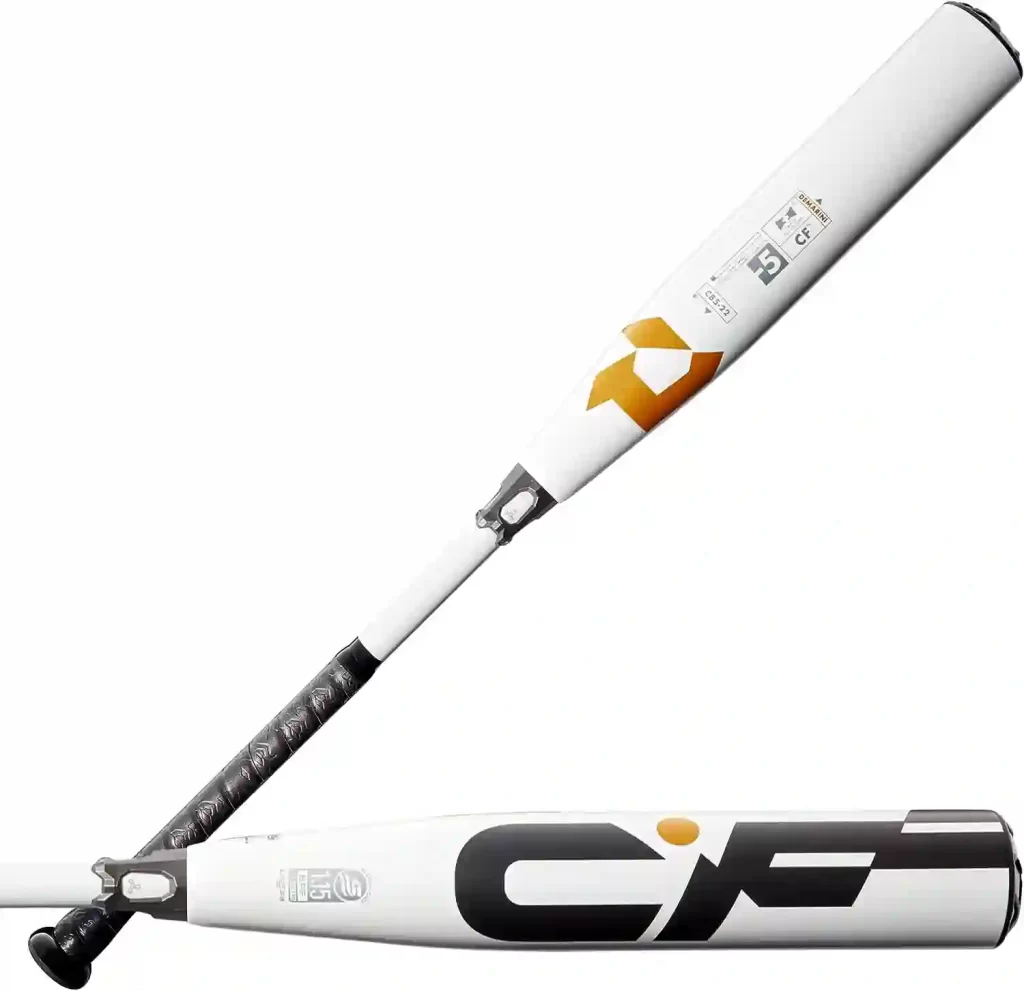

Experience the ultimate balance and control with the DeMarini 2022 CF USSSA Youth Baseball Bat. Its two-piece composite construction ensures optimal weight distribution, enhancing your bat speed and barrel control for unmatched performance. The Paraflex Plus Composite Barrel guarantees a vast sweet spot and consistent responsiveness. With the 3Fusion Connection, enjoy improved weight control, reduced vibration, and energy redirection. The ReAction End Cap further elevates barrel performance while maintaining swing speed. Elevate your game with the cutting-edge technology of the DeMarini CF USSSA Baseball Bat.
Product 2: BARNETT Baseball bat BB-1-8/9 28″ 29″ 31″ 32″ Aluminium 6061


Introducing the BARNETT Baseball bat BB-1-8/9, crafted from robust Aluminium 6061. Designed for both training and competition, this bat offers unmatched resistance and power. Its high-quality grip ensures superior handling, giving you the control you need to excel on the field. Whether you’re a beginner or an advanced player, the BARNETT BB-1-8/9 is your ideal choice for a winning game.
Product 3: WIN.MAX Baseball Bat Softball T-Ball Bat Lightweight Aluminum Alloy 32 inch, Metal Baseball Bats


Elevate your game with the WIN.MAX Baseball Bat Softball T-Ball Bat. Designed for players aged 8-12, this bat boasts high-quality aluminum material that’s perfect for softballs. The lightweight design (-12 drop) offers both power and control, resulting in fast swing speed and optimal performance. The durable aluminum alloy construction ensures longevity, while the elastic grip provides comfort and reduces cushioning during play. Stand out on the field with WIN.MAX, where high quality meets customer satisfaction.
Product 4: Rawlings | ADIRONDACK Wood Bat | Ash | -3 Drop | Multiple Styles
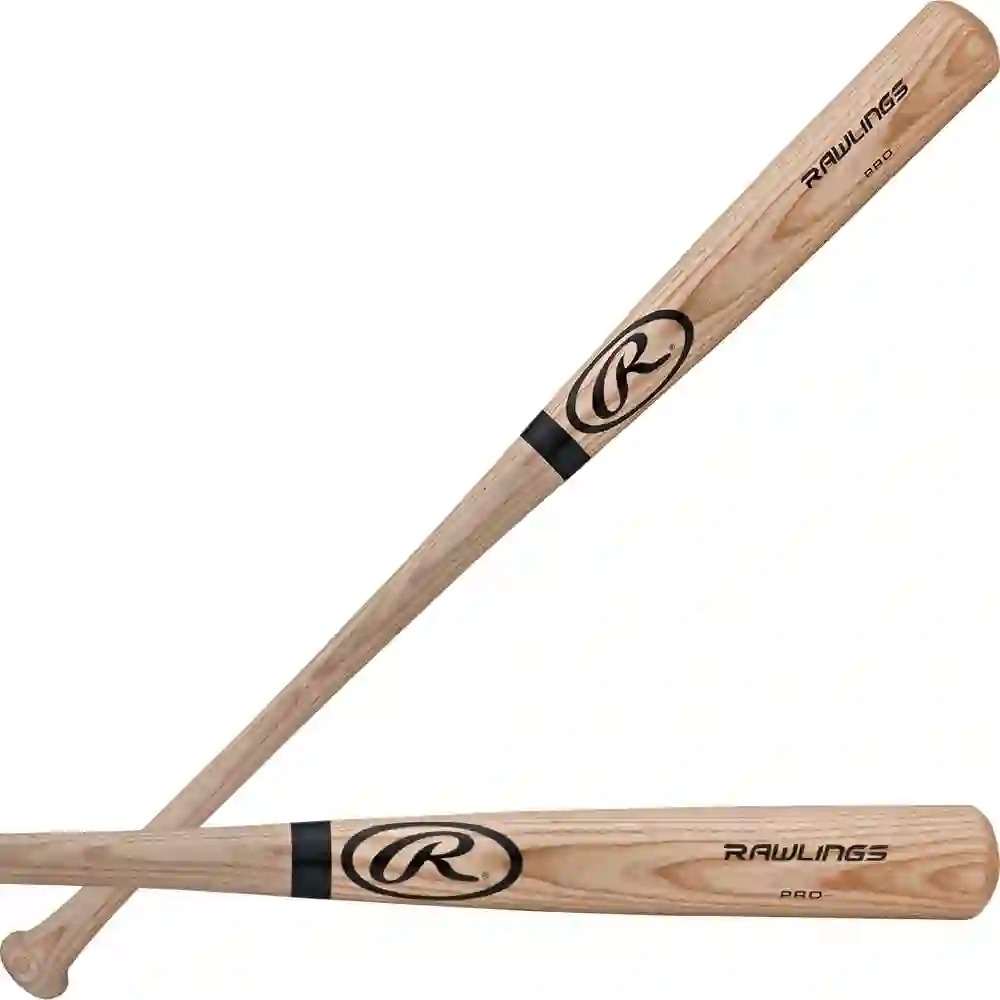

Experience the power and durability of Adirondack Ash with the Rawlings Wood Bat. Crafted for a powerful performance, this bat features a larger barrel design that packs additional pop. The comfortable 31/32-inch handle ensures an easy swing, making it perfect for players aged 13 and above. Choose from multiple styles and embrace the quality and reliability that Rawlings is renowned for.
Product 5: Baseball Bat Adult, Classic Wooden Youth Baseball Bat for Baseball Training, Home Self Defense Baseball Bats for Kids Teenagers


Unleash your potential with the Classic Wooden Youth Baseball Bat. This sturdy design fits perfectly in your hand, while the ergonomically non-slip handle provides a secure grip. The polished and varnished surface showcases the natural beauty of locust wood, offering both aesthetics and impact resistance. Perfect for training, home defense, and self-defense, this bat combines power and control in a modern design. Give the gift of classic style and performance to kids and adults alike.
Product 6: Genuine Solid Beech Wood Baseball Bat – 27 Inch 23 Oz – Tball Bat, Self Defense, Weight Training, and Pickup Games – Classic and Timeless Design – KOTIONOK


Step into the realm of classic American tradition with the Genuine Solid Beech Wood Baseball Bat. Crafted from premium Beech wood, this bat balances a classic lightweight feel with durability. Ideal for boys aged 8-12, this bat is perfect for tee ball, practice, and pickup games. Embrace its timeless design for self-defense, supported by a traditional-style tapered end cap and pommel knob. Boost your game through daily training, thanks to its proper fit, feel, and performance-enhancing features. Choose KOTIONOK for a modern take on a timeless classic.
In Crux
In the world of baseball, the choice between aluminum and wooden bats is a decision that extends beyond the confines of the playing field. Throughout this article, we’ve explored the advantages, performance comparisons, player testimonials, and case studies that provide a comprehensive view of this enduring debate. As we conclude our journey through the nuances of bat selection, let’s recap the key takeaways:
Aluminum bats offer enhanced power, reduced sting on contact, durability, and consistent performance due to their advanced engineering. On the other hand, wooden bats demand a higher level of bat control, connect players to the authenticity of the sport’s roots, and promote skill refinement.
Through the insights of players who have experienced both types of bats, we’ve discovered the diverse motivations and benefits behind their choices. Some players find empowerment in aluminum bats’ technology-driven power, while others appreciate the challenge and authenticity that wooden bats provide.
Examining case studies has illustrated how transitioning between aluminum and wooden bats can reshape a player’s performance trajectory. These examples underscore the importance of considering individual goals, skill levels, and aspirations when making this decision.
The path to choosing the right bat involves assessing skill levels, consulting with experts, hands-on testing, budget considerations, and embracing the journey of discovery. Each step contributes to a well-rounded decision that aligns with personal preferences and goals.
In the end, the choice between aluminum and wooden bats is a reflection of individual identity and approach to the game. Your preference, playing style, and aspirations play a pivotal role in determining which bat type will enhance your performance and enjoyment on the field.
As you step onto the baseball field, remember that the choice between aluminum and wooden bats is more than a technical decision; it’s an embodiment of your connection to the sport. Whether you gravitate toward the innovation of aluminum or the heritage of wood, the essence of baseball remains constant: the pursuit of excellence, the joy of the game, and the celebration of the moments that only a bat can create. Your journey is uniquely yours, and the bat you wield is an extension of your passion, dedication, and love for the beautiful game of baseball.
Suggested Review Products
FAQs about Aluminum or Wood Baseball Bats?
[sp_easyaccordion id=”382″]

Meet Daniel Anderson, the heart and soul behind Baseball Pro Picks. At 49, Daniel’s life has revolved around baseball, a passion that’s as strong today as it was when he first fell in love with the game. Living in the USA, Daniel has dedicated countless hours to watching, analyzing, and understanding every pitch, hit, and home run, making almost no game missed. His deep-rooted love for the sport is matched only by his commitment to sharing insightful, expert analysis with fellow baseball enthusiasts. With decades of experience and a keen eye for the game’s nuances, Daniel brings a unique perspective that enriches Baseball Pro Picks. Trust Daniel to guide you through the intricacies of baseball with the authority and trustworthiness of a true aficionado.






